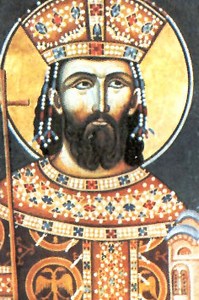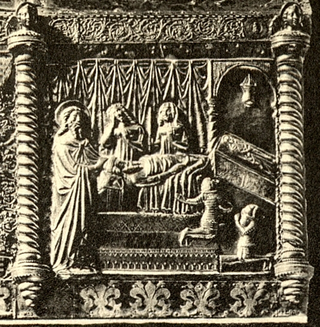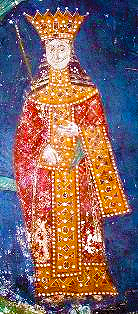Nemanjić family tree
Contents

Nemanjić family tree

| Family tree of Nemanjić monarchs | ||||||||||||||||||||||||||||||||||||||||||||||||||||||||||||||||||||||||||||||||||||||||||||||||||||||||||||||||||||||||||||||||||||||||||||||||||||||||||||||||||||||||||||||||||||||||||||||||||||||||||||||||||||||||||||||||||||||||||||||||||||||||||||||||||||||||||||||||||||||||||||||||||||||||||||||||||||||||||||||||||||||||||||||||||||||||||||||||||||||||||||||||||||||||||||||||||||||||||||||||||||
|---|---|---|---|---|---|---|---|---|---|---|---|---|---|---|---|---|---|---|---|---|---|---|---|---|---|---|---|---|---|---|---|---|---|---|---|---|---|---|---|---|---|---|---|---|---|---|---|---|---|---|---|---|---|---|---|---|---|---|---|---|---|---|---|---|---|---|---|---|---|---|---|---|---|---|---|---|---|---|---|---|---|---|---|---|---|---|---|---|---|---|---|---|---|---|---|---|---|---|---|---|---|---|---|---|---|---|---|---|---|---|---|---|---|---|---|---|---|---|---|---|---|---|---|---|---|---|---|---|---|---|---|---|---|---|---|---|---|---|---|---|---|---|---|---|---|---|---|---|---|---|---|---|---|---|---|---|---|---|---|---|---|---|---|---|---|---|---|---|---|---|---|---|---|---|---|---|---|---|---|---|---|---|---|---|---|---|---|---|---|---|---|---|---|---|---|---|---|---|---|---|---|---|---|---|---|---|---|---|---|---|---|---|---|---|---|---|---|---|---|---|---|---|---|---|---|---|---|---|---|---|---|---|---|---|---|---|---|---|---|---|---|---|---|---|---|---|---|---|---|---|---|---|---|---|---|---|---|---|---|---|---|---|---|---|---|---|---|---|---|---|---|---|---|---|---|---|---|---|---|---|---|---|---|---|---|---|---|---|---|---|---|---|---|---|---|---|---|---|---|---|---|---|---|---|---|---|---|---|---|---|---|---|---|---|---|---|---|---|---|---|---|---|---|---|---|---|---|---|---|---|---|---|---|---|---|---|---|---|---|---|---|---|---|---|---|---|---|---|---|---|---|---|---|---|---|---|---|---|---|---|---|---|---|---|---|---|---|---|---|---|---|---|---|---|---|---|---|---|---|---|---|---|---|---|---|---|---|---|---|---|---|---|---|---|---|---|---|---|---|---|---|---|---|---|
| ||||||||||||||||||||||||||||||||||||||||||||||||||||||||||||||||||||||||||||||||||||||||||||||||||||||||||||||||||||||||||||||||||||||||||||||||||||||||||||||||||||||||||||||||||||||||||||||||||||||||||||||||||||||||||||||||||||||||||||||||||||||||||||||||||||||||||||||||||||||||||||||||||||||||||||||||||||||||||||||||||||||||||||||||||||||||||||||||||||||||||||||||||||||||||||||||||||||||||||||||||||

Stefan Radoslav, also known as Stephanos Doukas, was the King of Serbia, from 1228 to 1233.

Stefan Vladislav was the King of Serbia from 1234 to 1243. He was the middle son of Stefan the First-Crowned of the Nemanjić dynasty, who ruled Serbia from 1196 to 1228. Radoslav, the eldest son of Stefan the First-Crowned, was ousted by the Serbian nobility due to increasing Epirote influence through his marriage alliance to Theodore Komnenos Doukas; thus Vladislav became his successor. He is celebrated as Saint Vladislav by the Serbian Orthodox Church.

Stefan Nemanjić, known as Stefan the First-Crowned, was the Grand Prince of Serbia from 1196 and the King of Serbia from 1217 until his death in 1228. He was the first Serbian king by Nemanjić dynasty; due to his transformation of the Serbian Grand Principality into the Kingdom of Serbia and the assistance he provided his brother Saint Sava in establishing the Serbian Orthodox Church.

Lazar Hrebeljanović was a medieval Serbian ruler who created the largest and most powerful state on the territory of the disintegrated Serbian Empire. Lazar's state, referred to by historians as Moravian Serbia, comprised the basins of the Great Morava, West Morava, and South Morava rivers. Lazar ruled Moravian Serbia from 1373 until his death in 1389. He sought to resurrect the Serbian Empire and place himself at its helm, claiming to be the direct successor of the Nemanjić dynasty, which went extinct in 1371 after ruling over Serbia for two centuries. Lazar's programme had the full support of the Serbian Orthodox Church, but the Serbian nobility did not recognize him as their supreme ruler. He is often referred to as Tsar Lazar Hrebeljanović ; however, he only held the title of prince.

Stephen II was the Bosnian Ban from 1314, but in reality from 1322 to 1353 together with his brother, Vladislav Kotromanić in 1326–1353. He was the son of Bosnian Ban Stephen I Kotromanić and Elizabeth, sister of King Stefan Vladislav II. Throughout his reign in the fourteenth century, Stephen ruled the lands from Sava to the Adriatic and from Cetina to Drina. He was a member of the Kotromanić dynasty. He was buried in his Franciscan church in Mile, near Visoko, Bosnia.

The House of Crnojević was a medieval Serbian noble family that held Zeta, or parts of it; a region north of Lake Skadar corresponding to southern Montenegro and northern Albania, from 1326 to 1362 CE, then 1403 until 1515.

Đurađ I Balšić was the Lord of Zeta between 1362 and 13 January 1378. He was the eldest of the three sons of Balša I, and belonged to the Balšić family.

Đurađ II Balšić or George II Balshafl. 1385 – April 1403), was the Lord of Zeta from 1385 to 1403, as a member of the Balšić noble family. He was the son of Stracimir Balšić, and succeeded his paternal uncle Balša II in ruling Zeta. He reigned from 1386 up to 1389 in the still officially undissolved Serbian Empire in the form of a family alliance, then up to 1395 as an Ottoman vassal. He ruled until his death in 1403, when he was succeeded by his only son, Balša III. According to some historians, Serbian epic poetry identifies Đurađ II with Strahinja Banović.

The House of Lazarević was a Serbian medieval royal family, which ruled Moravian Serbia and the Serbian Despotate.

The House of Mrnjavčević was a medieval Serbian noble house during the Serbian Empire, its fall, and the subsequent years when it held a region of present-day Macedonia region. The house ruled a province from its base at Prilep from 1366 to 1395.

Princess Milica Hrebeljanović née Nemanjić also known as Empress (Tsaritsa) Milica, was a royal consort of Serbia by marriage to Prince Lazar, who fell in the Battle of Kosovo. After her husband's death, she took the role as queen regent of Serbia from 1389 to 1393, until her son, despot Stefan Lazarević came of age.

Ana-Neda was the Empress consort of Bulgaria briefly in 1323–1324 as the spouse of "Despot of Vidin" Michael Asen III "Shishman" who was elected as Emperor of Bulgaria in 1323. Later, she acted, for a short period of time, as regent for her son. She was the daughter of Serbian King Stefan Uroš II Milutin and Princess Elizabeth Arpad, daughter of King Stephen V of Hungary and Elizabeth the Kuman, a daughter of Köten. From the marriage with Michael Asen III, Anna had at least four sons, one of whom was Ivan Stephen of Bulgaria, later briefly the Emperor of Bulgaria (1330–1331).
The Vukanović dynasty, was a medieval Serbian dynasty that ruled over inner Serbia, centered in the Raška region, during the 11th and 12th century. Several members of the Vukanović dynasty also ruled in some other regions. The house may have descended from the Vojislavljević dynasty of Duklja. Vukanović dynasty was later succeeded in Serbia by the closely related Nemanjić dynasty.
Beloslava was a Bulgarian princess and Queen consort of Serbia as wife of Stefan Vladislav.

The Kingdom of Serbia, or the Serbian Kingdom, also known as Rascia, was a medieval Serbian kingdom in Southern Europe comprising most of what is today Serbia, Kosovo, and Montenegro, as well as southeastern Bosnia and Herzegovina, parts of coastal Croatia south of the Neretva river, Albania north of the Drin River, North Macedonia, and a small part of western Bulgaria. The medieval Kingdom of Serbia existed from 1217 to 1346 and was ruled by the Nemanjić dynasty. The Grand Principality of Serbia was elevated with the regal coronation of Stefan Nemanjić as king, after the reunification of Serbian lands. In 1219, Serbian Orthodox Church was reorganized as an autocephalous archbishopric, headed by Saint Sava. The kingdom was proclaimed an empire in 1346, but kingship was not abolished as an institution, since the title of a king was used as an official designation for a co-ruler of the emperor.

Zeta was one of the medieval polities that existed between 1371 and 1421, whose territory encompassed parts of present-day southern Montenegro and northern Albania, ruled by the Balšić family.
In the medieval Serbian states, the privileged class consisted of nobility and clergy, distinguished from commoners, part of the feudal society. The Serbian nobility were roughly grouped into magnates, the upper stratum, and the lesser nobility (vlasteličići). Serbia followed the government model established by the Byzantine Empire.

The fall of the Serbian Empire was a decades-long process in the late 14th century. Following the death of the childless Emperor Stefan Uroš V in 1371, the Empire was left without an heir and the magnates, velikaši, obtained the rule of its provinces and districts, continuing their offices as independent with titles such as gospodin, and despot, given to them during the Empire. This period is known as the dissolution or the beginning of the fall of the Serbian Empire.